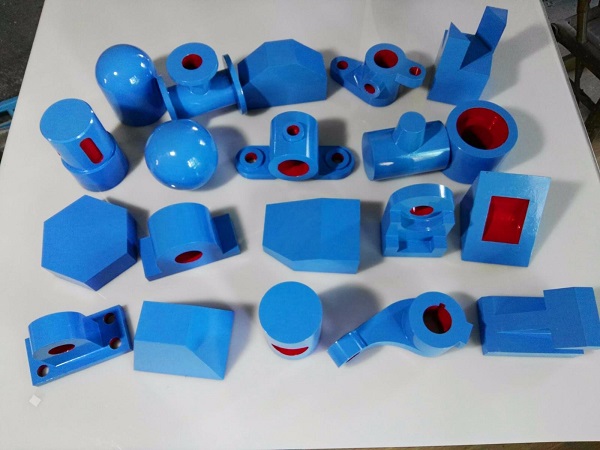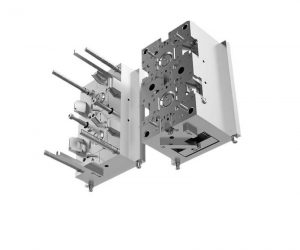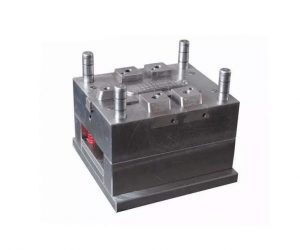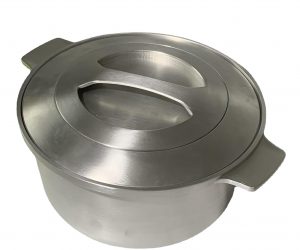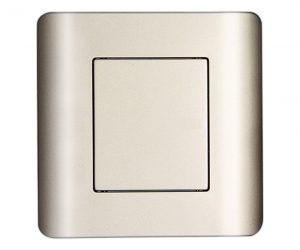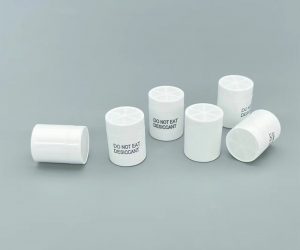What are Injection Molding Products
Injection molding products are objects created through the injection molding process, a widely used manufacturing method in the plastics industry. This process involves injecting molten material, typically plastic, into a mold cavity. Once the material cools and solidifies within the mold, it takes on the shape of the cavity, and the final product is ejected.
The basic principle of injection molding is relatively straightforward yet highly effective for mass - production. First, plastic pellets are fed into a heated barrel. As the pellets move through the barrel, a reciprocating screw rotates, melting the plastic by applying heat and shear force. The molten plastic is then forced, under high pressure, through a nozzle and into a closed mold cavity. After a short cooling period, during which the plastic solidifies, the mold opens, and the finished injection - molding product is removed.
For example, many of the plastic parts in your car, such as dashboard components, interior trims, and even some engine - related plastic parts, are injection - molded products. The same goes for countless household items like plastic containers, toys, and electronic device casings. This manufacturing method allows for the creation of products with complex shapes and high precision, meeting the diverse needs of various industries.
The Injection Molding Process
Step - by - Step Explanation
- Feeding the Plastic Pellets: The process begins with plastic pellets being poured into the hopper of the injection molding machine. These pellets are the raw material, and their quality and type are crucial for the final product. For example, if you're making a high - strength automotive part, you might use engineering plastics like ABS (Acrylonitrile Butadiene Styrene) pellets.
- Melting the Plastic: As the pellets move through the heated barrel, a reciprocating screw rotates. This rotation generates heat through shear force, melting the plastic pellets. The temperature in the barrel is carefully controlled. For most common plastics, the melting temperature ranges from 150°C to 300°C. For instance, polyethylene (PE) typically melts at around 120 - 180°C, while polypropylene (PP) melts in the range of 160 - 170°C.
- Injection: Once the plastic is fully melted and has a consistent, fluid - like consistency, it is ready to be injected into the mold. The reciprocating screw pushes the molten plastic forward with high pressure. This pressure can range from 500 to 2000 bar, depending on the complexity of the mold and the type of plastic. The molten plastic is forced through a nozzle and into the closed mold cavity, filling every intricate detail of the mold.
- Cooling: After the mold cavity is filled with molten plastic, the cooling stage begins. Cooling is a critical step as it determines the final shape and properties of the product. During this stage, the heat from the molten plastic is transferred to the mold, which is usually cooled by a circulating coolant, such as water. The cooling time varies depending on the size and thickness of the product. For a small, thin - walled plastic part, it might take only a few seconds to cool, while a large, thick - walled component could require several minutes.
- Demolding: Once the plastic has cooled and solidified enough to maintain its shape, the mold opens, and the finished injection - molding product is ejected. Ejection is typically achieved using ejector pins or other mechanical devices built into the mold. These pins push the product out of the mold cavity, and the product is then ready for further processing or quality inspection.
Key Parameters and Their Influence
- Temperature:
- Barrel Temperature: As mentioned before, it affects the melting of the plastic. If the barrel temperature is too low, the plastic may not melt completely, leading to inconsistent flow during injection and causing defects like short shots (where the plastic doesn't fully fill the mold cavity). On the other hand, if the temperature is too high, the plastic may degrade, changing its properties and resulting in a lower - quality product with discoloration or brittleness.
- Mold Temperature: This impacts the cooling rate of the plastic. A higher mold temperature can result in a slower cooling rate, which may reduce internal stresses in the product but can also lead to longer cycle times. A lower mold temperature, while it speeds up the cooling process, can cause the plastic to cool unevenly, leading to warping or dimensional inaccuracies. For example, in the production of optical lenses, a precise mold temperature is crucial to ensure the lens has the correct optical properties and dimensional accuracy.
- Pressure:
- Injection Pressure: It is responsible for forcing the molten plastic into the mold cavity. Insufficient injection pressure can cause incomplete filling of the mold, while excessive pressure can lead to flash (where the plastic leaks out between the mold halves), over - packing (causing the product to be overly dense and potentially warped), and increased wear on the mold.
- Back Pressure: Applied during the melting and plasticizing stage, back pressure helps to improve the homogeneity of the molten plastic. By increasing back pressure, the plastic is forced to mix more thoroughly, reducing the presence of air bubbles and ensuring a more uniform melt. However, too much back pressure can cause excessive shear heating, which may degrade the plastic.
- Time:
- Injection Time: Determines how quickly the molten plastic is injected into the mold. A short injection time can be beneficial for thin - walled products to prevent premature cooling of the plastic in the mold runner system. But for thick - walled products, a longer injection time may be required to ensure even filling without creating excessive shear forces.
- Cooling Time: As previously stated, it is essential for the plastic to solidify properly. An insufficient cooling time can cause the product to deform during demolding, while an overly long cooling time reduces production efficiency. The cooling time can be optimized based on the material properties, product geometry, and mold design.
Materials Used in Injection Molding
Common Plastic Materials
- ABS (Acrylonitrile Butadiene Styrene): ABS is a popular thermoplastic polymer. It offers a great combination of properties. It has high impact resistance, which means it can withstand sudden forces without breaking easily. For example, the outer shells of many electronic devices like laptops and game consoles are made of ABS because they need to protect the internal components from accidental drops. It also has good mechanical strength and dimensional stability. ABS can be easily molded into complex shapes, and its surface finish is often excellent, making it suitable for products where aesthetics matter. Additionally, it has decent chemical resistance, although it may not be as resistant as some specialized materials.
- PP (Polypropylene): PP is another widely used plastic in injection molding. It is known for its relatively low density, which makes products made from it lightweight. This is why it is commonly used in the production of disposable plastic products like food containers and packaging materials. PP has good heat resistance, with a melting point in the range of 160 - 170°C, allowing it to be used in applications where moderate heat exposure is expected, such as some kitchen utensils that can be used in the microwave. It also has excellent chemical resistance to many acids, alkalis, and solvents, which makes it suitable for storing various chemical substances.
- PE (Polyethylene): There are different types of PE, such as HDPE (High - Density Polyethylene) and LDPE (Low - Density Polyethylene). HDPE is rigid and has high tensile strength. It is often used for making products like plastic pipes for water and gas supply, as well as large containers due to its durability and resistance to environmental stress cracking. LDPE, on the other hand, is more flexible and has better transparency. It is commonly used in the production of plastic bags, films, and some flexible packaging materials. PE also has good electrical insulation properties, which is useful in the electronics industry for applications like insulating cables.
Specialized and High - Performance Materials
- Engineering Plastics: Engineering plastics are a class of high - performance polymers with unique properties. For example, PEEK (Polyether Ether Ketone) is a high - performance thermoplastic. It has outstanding heat resistance, with a continuous working temperature of up to 260°C, and can even withstand short - term temperatures as high as 300°C or more. This makes it ideal for applications in the aerospace industry, where components need to endure extreme heat during flight. PEEK also has excellent chemical resistance, high mechanical strength, and good dimensional stability, which are crucial for parts in aircraft engines and other high - stress components.
- Thermoplastics Elastomers (TPEs): TPEs combine the properties of rubber and plastic. They have the flexibility and elasticity of rubber, along with the processability of plastics. TPEs are often used in applications where a soft, grippy surface is required, such as the handles of tools or the grips on sports equipment. They can also be used for making seals and gaskets due to their ability to conform to irregular surfaces and maintain a tight seal.
Yigu Technology's View
As a non - standard plastic metal products custom supplier, Yigu Technology has a unique perspective on injection molding products. We specialize in providing customized solutions that meet the diverse needs of our clients. Our team of experts is proficient in handling various materials, including both common and specialized plastics, as well as metal - plastic combinations.
In terms of customization, we work closely with clients from the initial design concept. By leveraging advanced CAD/CAM technologies, we can transform ideas into highly precise molds. This allows for the production of injection - molding products with complex geometries and tight tolerances.
When it comes to materials, we are constantly exploring innovative materials and material combinations. For example, we have developed unique processes for integrating metal inserts into plastic injection - molding products, enhancing the product's strength, conductivity, or heat - dissipation capabilities.
Process optimization is also a key focus for us. We continuously improve our injection - molding processes to reduce waste, shorten cycle times, and enhance product quality. Our in - house quality control system ensures that every product leaving our factory meets the highest standards. With our expertise and commitment, we are confident in delivering top - notch injection - molding products and services to our clients.
FAQ
What are the most common materials used for injection molding?
The most common materials are ABS, PP, and PE. ABS offers high impact resistance, good mechanical strength, and is easy to mold into complex shapes. PP is lightweight, has good heat and chemical resistance. PE comes in different densities; HDPE is rigid and suitable for pipes and containers, while LDPE is flexible and used for bags and films.
